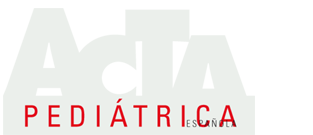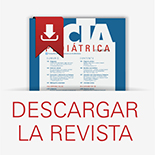Resumen
Introducción: Los objetivos principales del presente estudio son conocer qué opinan los padres y pediatras sobre la prevención y el tratamiento de las intoxicaciones y ver en qué situaciones se está utilizando el carbón activado en atención primaria para evaluar su empleo en el domicilio.
Material y métodos: Se realizaron dos encuestas en el Área 2 del Insalud de Madrid, una entre los padres y otra a los pediatras, para valorar sus conocimientos y actitud ante una intoxicación. Además, se estableció la incidencia de intoxicaciones en el Hospital «San Rafael» de Madrid y se analizaron las llamadas recibidas en el Instituto Nacional de Toxicología. Los datos recogidos fueron tratados mediante el programa estadístico SPSS 10.0.
Resultados: La mayoría de los 212 padres encuestados mantiene el posible tóxico fuera del alcance de los niños. Ante una intoxicación, los familiares: acudirían a urgencias (150/212), contactarían telefónicamente con el Instituto Nacional de Toxicología (96/212), irían al consultorio más cercano (21/212) o llamarían a su médico (18/212). La mayor parte de los 47 pediatras encuestados se siente capacitado para atender a un niño intoxicado, aunque no disponen de recursos suficientes para ello. El 83% de los facultativos considera que el carbón activado puede utilizarse en atención primaria, aunque sólo el 29% opina que deba ser un medicamento de uso domiciliario.
Conclusiones: Dado que la mayoría de las intoxicaciones ocurren en el domicilio, el uso del carbón activado durante la primera media hora conllevaría muchos beneficios, como el menor gasto hospitalario y la precocidad del tratamiento. El papel de los padres ante su posible introducción debería ser activo. Primero adoptando las medidas preventivas recomendadas por los profesionales y autoridades sanitarios y, ante la sospecha de intoxicación, poniéndose en contacto con los institutos de toxicología o su médico para saber si la sustancia es tóxica y, en este caso, su tratamiento con carbón activado en el domicilio, para lo cual sería interesante que los padres hubieran recibido de forma previa algún tipo de entrenamiento.
Abstract
Introduction: The main objectives of present study are to know the opinion of parents and pediatricians concerning to the prevention and treatment of intoxications and to check in which situations the activated charcoal is used in Primary Care and at home in order to evaluate the results.
Material and methods: Two polls were accomplished in Area 2 of the IMSALUD in Madrid in order to appraise the knowledge and behaviour in presence of the intoxication one among the parents and the other among the pediatricians. Moreover, the San Rafael Hospital of Madrid showed the incidence of intoxications in addition to the examination of the calls received from Spanish Toxicology National Institute. These data were treated throuhg the statistical program SPSS 10.0.
Results: The majority of the 212 inquired parents would take four different ways of behaving of a possible intoxication: they would call to the Emergency Department (150/212); they would contact to the Spanish Toxicology National Institute by telephone (96/212); they would visit the nearest doctor´s office (21/212); they would call their doctor (18/212). In relation to the 47 inquired pediatricians, we can verify that the majority of them are qualified for the treatment of the intoxication in children with the proviso that they don´t have the necessary resources for it. The 83% of the doctors considerer the activated charcoal should be employed in Primary Care; however, only the 29% of them approve the drug in domicilary use.
Conclusions: Since the majority of intoxications occur at home, the use of the activated charcoal during the first shocking hour would bring many advantages as the minor hospitable expense and significance of being a precocious treatment. Therefore, the parents should take an active role since they could make use of this treatment, just embracing the preventive measures recommended by the professional and sanitary authorities: well getting in touch to the Toxicology Institutes well phoning their doctor in order to letting know the ingested substance. Once the toxicity is confirmed, the parents could treat their children with the activated charcoal at home. Finally, we suggest providing a previous training to the parents for the use of this treatment.














